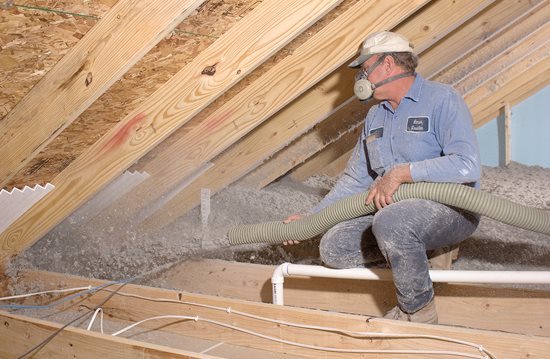The walls, ceilings, and floors of your home are filled with odd-shaped cavities and obstacles created by plumbing, air ducts, and wiring. For your insulation to work properly, it must fill in completely around these obstacles. Cellulose insulation is sprayed or blown into your home’s walls, providing a seamless insulation system.

The Benefits of Choosing Cellulose Insulation
While other insulation options prove to be less expensive, they are not nearly as effective at filling in the many spaces and cavities in your home’s ceilings and walls. Cellulose insulation offers a number of different benefits—it can:
- Make your home more comfortable year-round
- Reduce outside noises (and muffle sounds between different levels and rooms inside homes)
- Help improve the overall efficiency of your air conditioner
- Help increase resale value to your home
- Facilitate a healthier environment (reduced energy consumption decreases carbon dioxide and other greenhouse gas emissions)
No matter where you insulate in your home, you’ll notice the difference right away! At MIG Building Systems, we’ve been installing cellulose insulation for years, so we can help you improve your home’s energy efficiency or add insulation to a new project anywhere in the Syracuse and Rochester areas.
Frequently Asked Questions about Cellulose Insulation
What are the Differences Between Fiberglass and Cellulose?
Two of the most popular types of insulation are cellulose and fiberglass. They both are effective at helping reduce sound transfer and can be blown into wall cavities. Their main differences are:
- Organic (cellulose) vs. synthetic (fiberglass) materials
- Color
- R-value and weight
Does Cellulose Insulation Reduce Noise?
Limiting the transmission of sound from one area to another requires a material that encloses the source of the noise, forming a barrier between the source and the adjacent area. This is what insulation does! Fiberglass and cellulose are the best types of insulation for soundproofing purposes.